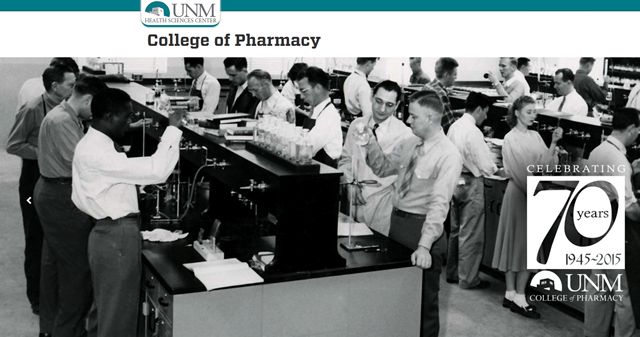
Pharmaceutical Sciences ETDs
Publication Date
Summer 7-15-2019
Abstract
Background/Objectives: Children born to mothers with opioid use disorder often show withdrawal effects characterized by increased stress, hyperirritability, tremors, tachycardia, sleep deprivation, and gastrointestinal discomfort, commonly known as “neonatal opioid withdrawal syndrome” (NOWS). Studies have shown that the effect of NOWS can lead to several health-related disorders later in life leading to increased health care utilization. However, detailed study of post-discharge health care utilization, specifically focusing on encounters with the health care system is currently lacking in the literature. Our objective was to evaluate health care utilization in infants who were diagnosed with NOWS during a one-year follow-up period after their discharge from the hospital. Secondly, we wanted to assess the relationship between NOWS related severity measures and post-discharge health care utilization during a one-year follow-up period.
Methods: Health Facts® data, collected from over 800 contributing CERNER hospitals across the United States, was used to identify infants who were diagnosed with NOWS. Health care utilization during a follow-up period of 365 days after the index period (discharge date) was evaluated. As comparators, two groups were utilized: late preterm (gestational age: 33 weeks up to 36 6/7 weeks) and uncomplicated birth infants. Outcomes measured were rehospitalization, emergency department visits, and outpatient visits. We used logistic regression model to assess the impact of NOWS on health care utilization after discharge. Poisson and Zero-inflated Poisson regression were used to quantify the incidence rates of the health care utilization event. Finally, Cox proportional-hazards regression was used to estimate time to first event related to health care utilization after discharge from the hospital.
Results: We identified our study cohort as infants who had birth related discharges between the period of January 1, 2011, and October 31, 2016 which included 3,526 infants with NOWS, 24,474 infants who had late preterm birth, and 88,452 infants who had uncomplicated births (representing a 25% sample of the births recorded). Mirroring the opioid epidemic in the U.S. there was an increasing trend in the incidence rate of NOWS. Infants with NOWS had significantly longer length of stay (14.9 days vs. 2.1 days, p<0.001), and higher cost (Median: $24,944 vs. $3,129, p<0.001) compared to uncomplicated birth group. Infants diagnosed with NOWS had significantly higher odds of one-year rehospitalization (Adjusted odds ratio: 1.7, 95% C.I.: 1.3-2.2) and 30-day rehospitalization (Adjusted odds ratio: 1.9, 95% C.I.: 1.3-2.6) compared to uncomplicated birth infants. There was no statistical difference in the risk of emergency department visits in the NOWS group compared to uncomplicated birth group after adjustment for confounders. Infants in the NOWS group had higher odds of any 30-day composite visit (emergency department visit or rehospitalization) compared to the uncomplicated birth group (Adjusted odds ratio: 1.4, 95% C.I.: 1.2-1.6). The results from logistic regression models closely aligned with the findings from the Poisson, Zero-inflated Poisson, and Cox proportional-hazards regression models. Infants with NOWS had similar rates of post-discharge healthcare utilization when compared to late preterm infants. In examining the impact of NOWS severity measures on post-discharge health care utilization, we found that some of the measures, such as pharmacological management of NOWS, length of stay, receiving medications (e.g., benzodiazepines), and presence of respiratory conditions were associated with higher probability of post-discharge health care utilization. While the results from logistic regression models were inconsistent, results from principal component analysis, which combined NOWS severity measures, showed that NOWS severity was associated with post-discharge health care utilization.
Conclusions/Implications: Our study shows that the higher rates of health care utilization of infants who were diagnosed with NOWS is not just limited to a period of hospitalization for NOWS treatment but can also manifest for an extended period of time post-discharge. Hospital readmissions and emergency department visits could lead to additional physical, mental, and financial stress to the families of the affected infants. Furthermore, they signal presence of an underlying medical condition that could lead to poor health and even infant mortality. The findings of our study suggest that closer follow-up and management of infants may be necessary. Additional support to the infant-maternal dyad may help in improving health outcomes in these infants in the early years of their lives.
Fourth Committee Member
Lawrence M. Leeman
First Committee Member (Chair)
Ludmila N. Bakhireva
Degree Name
Pharmaceutical Sciences
Second Committee Member
Melissa H. Roberts
Level of Degree
Doctoral
Third Committee Member
Jessie R. Maxwell
Department Name
College of Pharmacy
Document Type
Dissertation
Keywords
Neonatal opioid withdrawal syndrome, pregnancy, substance use disorder, health care utilization, hospital readmission, emergency department visit
Recommended Citation
Shrestha, Shikhar. "ASSESSMENT OF POST-DISCHARGE HEALTH CARE UTILIZATION IN INFANTS WITH NEONATAL OPIOID WITHDRAWAL SYNDROME." (2019). https://digitalrepository.unm.edu/phrm_etds/25
